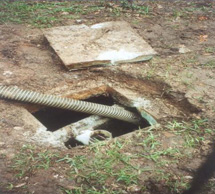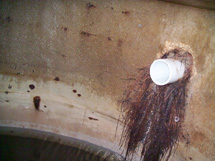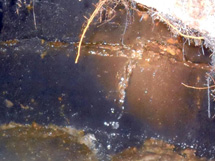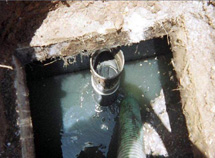For service call (210) 890-2778
or click here to request service
Why You Should Have Your Septic Tank Cleaned (Part 2)

While routine maintenance ensures you remove solids from your septic tank, it’s also an opportunity for your pumper to check the tank’s components for any problems — since septic tanks are buried, the only time you can check these things is when the tank is pumped out.
You can’t fix what you can’t see. Getting on a regular maintenance schedule can help prevent problems with your system.
What parts should be looked at?
A few things that should be checked routinely are:
Inlet and outlet baffles/tees
 Make sure they’re present and not clogged with roots. Missing or broken baffles/tees can lead to major problems with the system.
Make sure they’re present and not clogged with roots. Missing or broken baffles/tees can lead to major problems with the system.
Roots
Roots can enter tank from several places, such as the access lid(s) of the tank, inside or around the baffles, or at the seams of the tank.
Roots that enter the tank through the lid can be cut off at time of pumping; not cutting them off can result in blockages and backups.
Dividing wall
This wall separates the tank into two compartments, keeping sludge trapped in the first compartment and preventing solids from exiting the tank to the absorption area.
Most dividing walls are made of concrete and are very sturdy — however, plastic walls are not sturdy and can become loose and fall or lean in the tank.
A fallen or leaning dividing wall can trap solids in the tank, preventing them from being removed during pumping and forcing the homeowner to have the tank pumped more frequently.
Leaks
 Is the tank leaking? If the liquid level is below the outlet pipe, it’s likely.
Is the tank leaking? If the liquid level is below the outlet pipe, it’s likely.
Most tanks are installed in a top and bottom section, and it’s usually from the seam of those sections that tanks leak.
Sometimes the liquid level may not be low when the pumper arrives, but as pumping starts water that is saturated in the soil enters the tank through small holes — another indication of a leak.
Liquid level
The normal operating level in the tank is at the outlet pipe, approximately a foot from the top of the tank. If the liquid level is above the outlet pipe, this indicates the drainfield is not accepting wastewater, or is accepting the wastewater at a slower rate than normal.
Backflow
 Backflow from the drainfield can indicate a lack of proper fall from the tank to the drainfield, and can indicate the liquids are not percolating beneath the drainfield.
Backflow from the drainfield can indicate a lack of proper fall from the tank to the drainfield, and can indicate the liquids are not percolating beneath the drainfield.
A word of caution
Not all septic companies are equal. Some pumpers may only pump out one compartment of a two-compartment tank; some pumpers may only pump out the liquids and leave the solids in the tank.
As a homeowner, you are responsible for hiring a company that disposes of your wastewater in a legal manner.
Be sure your pumper checks the above items each time the tank is pumped and disposes of the wastewater in the way approved by the Texas Commission on Environmental Quality (TCEQ) — you can ask for a manifest ticket from your pumper after their truck is emptied at the treatment plant.
If you’re looking for septic tank cleaning services, we’d love to help you. We can also schedule routine reminders for you when your tank is due for service. Give us a call or contact us online today for more information.
